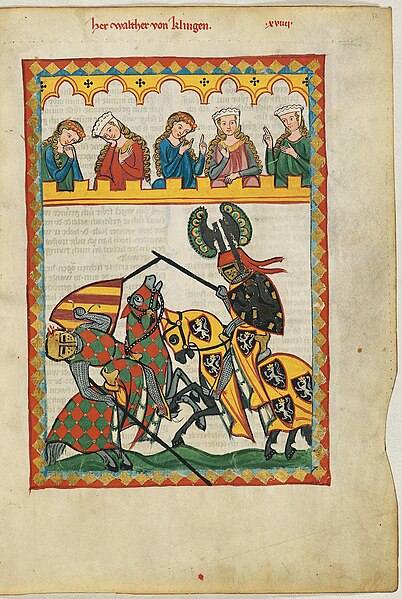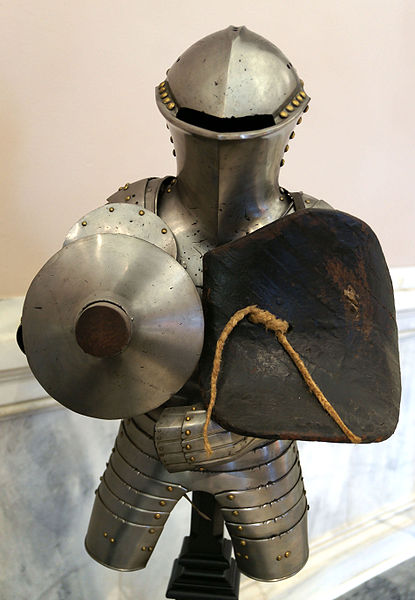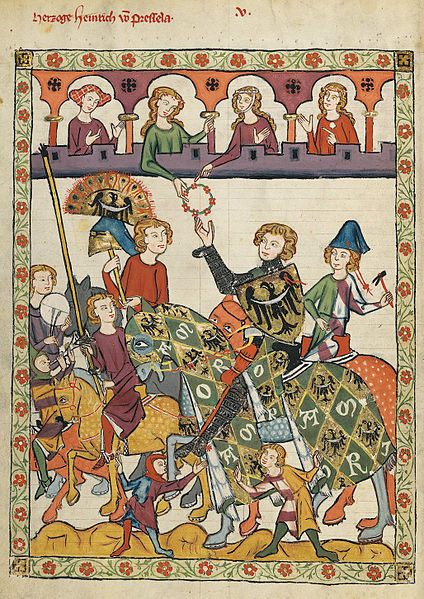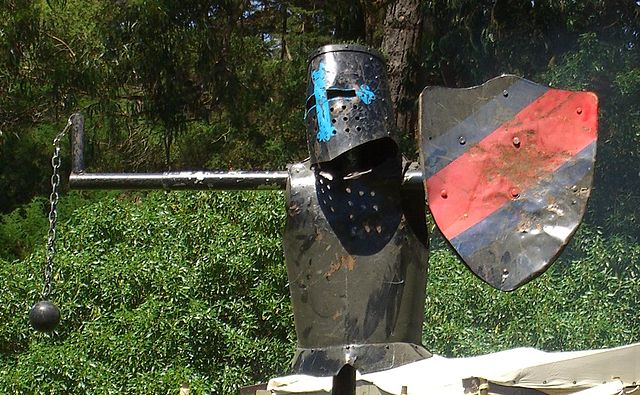Jousting is a medieval and renaissance martial game or hastilude between two combatants either on horse or on foot. The joust became an iconic characteristic of the knight in Romantic medievalism.
Renaissance-era depiction of a joust in traditional or "high" armour, based on then-historical late medieval armour (Paulus Hector Mair, De arte athletica, 1540s)
Depiction of a late 13th-century joust in the Codex Manesse. Joust by Walther von Klingen.
Depiction of a standing joust in an Alsatian manuscript of ca. 1420 (CPG 359); protection for the legs of the riders is integrated into the horse armour.
The Stechzeug of John the Constant (c. 1500). The shield strapped to his left shoulder is called an ecranche.
Hastilude is a generic term used in the Middle Ages to refer to many kinds of martial games. The word comes from the Latin hastiludium, literally "lance game". By the 14th century, the term usually excluded tournaments and was used to describe the other games collectively; this seems to have coincided with the increasing preference for ritualistic and individualistic games over the traditional mêlée style.
A knight receiving a lady's favour at a hastilude. From Codex Manesse.
Quintain at the Golden Gate Renaissance Festival 2005






